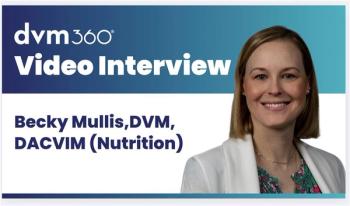
Mind Over Miller: The evolving pet diet
When I started practicing, the most common cause of death in older dogs was chronic interstitial nephritis.
When I started practicing, the most common cause of death in older dogs was chronic interstitial nephritis. In my area, the prevalence of leptospirosis was an important contributory cause of chronic interstitial nephritis. (Of course, that was before a canine leptospirosis vaccine was available.) Dr. Mark Morris Sr. gave us the only effective way to treat chronic interstitial nephritis back then when he developed a dog food with minimum quantity but optimum quality protein content (this diet today is known as Prescription Diet k/d). Afterward, the company he founded, Hill's Pet Nutrition, produced Prescription Diets r/d, c/d, i/d, h/d, and so on. Soon, other pet food producers followed suit, offering a variety of products designed to prevent or control various afflictions.
Now the pet food industry is a multibillion-dollar business in the United States. The enormous variety of products available caters to the whims of our diverse population. Inexpensive pet food is available for the economical shopper, and home-cooked products are available for those who think food from a can or plastic bag is inferior to fresh food. Pet food is colored and scented, not to attract the pet but to attract the pet's owner. And, yes, vegetarian pet food is also available, not only for the primarily carnivorous dog but also for the completely carnivorous cat.
Vegetarian pet food? Recently, I asked a Hill's executive if the company was planning to introduce a dog food called v/d. He said that might be medically confusing to clients.
Things sure have changed. When I was growing up during the Great Depression, poultry farm owners often fed their dogs cracked eggs. Many of these dogs suffered from biotin nutritional deficiency because raw eggs contain avidin, which ties up the vitamin biotin. (Cooking destroys avidin, so cooked eggs can be safely fed to dogs.) And I remember my mother buying beef lung at the butcher shop (no supermarkets then) to feed to our dogs. Raw lung and table scraps were what our dogs ate; of course, the table scraps included potato peelings, cereal, meat trimmings, rendered fat, moldy cheese, bread crusts, and lots of bones.
Today, most dogs and cats in the United States are fed commercial pet foods and actually consume a more balanced diet than do their owners. In fact, the most common form of malnutrition in man or beast is the excessive consumption of calories. This diagnosis is easy to make, even from a distance.
While we are anthropomorphizing, today a large market exists for clothing for pets. Cute little hats, dresses, sports jackets, etc. are available. Soon a line of slimming styles will be marketed for the larger pet. Has anybody done a stomach stapling in a dog yet?
Robert M. Miller, DVM, is an author and a cartoonist, speaker, and Veterinary Medicine Practitioner Advisory Board member from Thousand Oaks, Calif. His thoughts in "Mind Over Miller" are drawn from 32 years as a mixed-animal practitioner. Visit his Web site at
Newsletter
From exam room tips to practice management insights, get trusted veterinary news delivered straight to your inbox—subscribe to dvm360.






